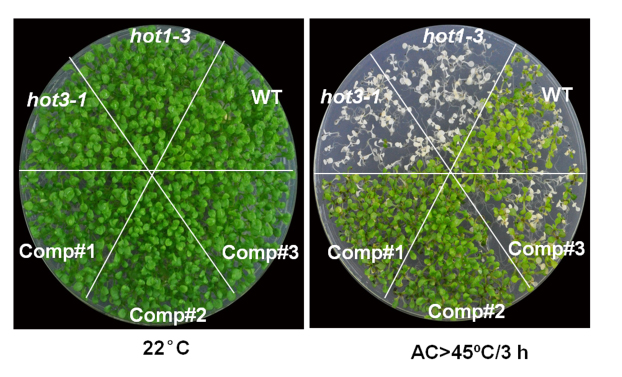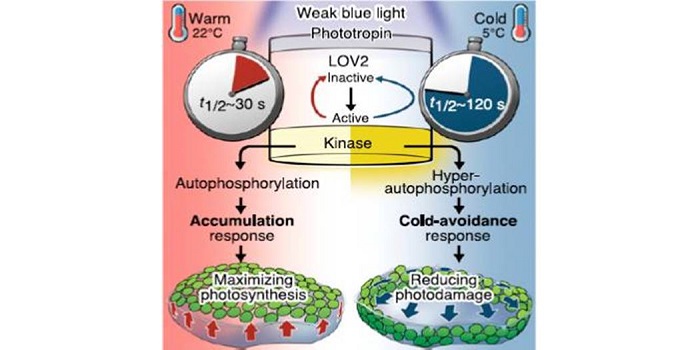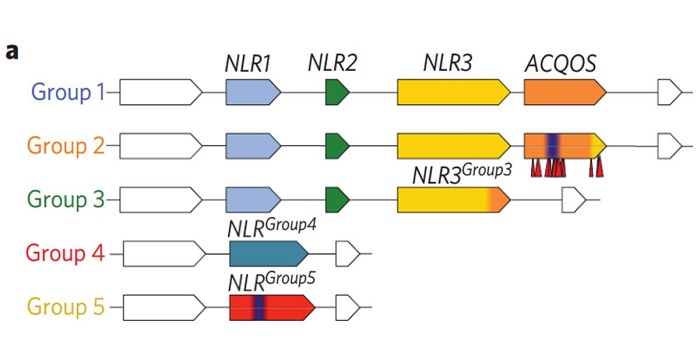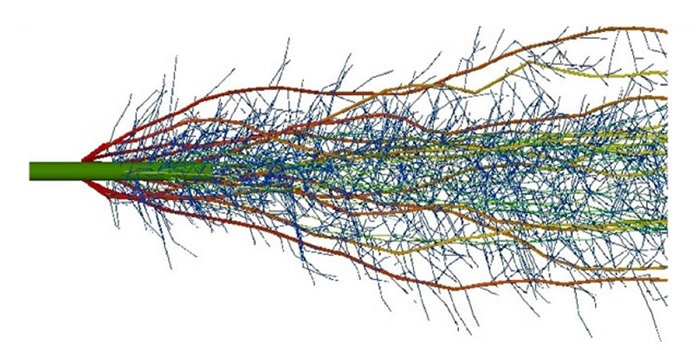
Translating to beat the heat
Research, The Plant Cell, The Plant Cell: In a NutshellZhang et al. investigate protein translation under heat stresss http://www.plantcell.org/content/29/8/1952
By Elizabeth Vierling
Plants can’t move to avoid unfavorable growth conditions, such as insufficient water availability or extremes of temperature. When plants are confronted with stressful…

Phototropin perceives temperature based on the lifetime of its photoactivated state
Blog, Plant Science Research Weekly, Research, Research BlogFujii et al. studied the role that blue-light perceiving phototropins play in sensing temperature. They studied the temperature response in the liverwort Marchantia polymorpha, which has only one phototropin. At 5°C, blue-light perception by phototropins induces a cold-avoidance response in which chloroplasts…

Some Like it HOT: Protein Translation and Heat Stress in Plants
Blog, Research, The Plant Cell: In BriefThe ability to acclimate to high temperatures that are normally lethal is common to virtually all organisms on the planet. A short exposure to milder heat stress informs organisms that they should ready themselves in case they experience even warmer conditions. Acquired thermo-tolerance in plants is…

Phototropin perceives temperature based on the lifetime of its photoactivated state
Blog, Plant Science Research Weekly, Research, Research BlogAlthough plants clearly perceive and respond to changes in temperature, it has not always been clear how they perceive temperature and its changes. Evidence for temperature sensing through membrane fluidity, protein stability and, more recently, the reversion of phytochrome to its inactive form has been…

Temperature increase reduces global yields of major crops in four independent estimates ($)
Blog, Plant Science Research Weekly, Research, Research Blog0 Comments
/
Although future negative impacts on crop yields expected from rising temperature are well known to plant scientists, there are still some members of the broader public that need to be made aware of this problem. Zhao et al. combined four different methods of assessing the impact of increasing temperatures…

NLR locus-mediated trade-off between abiotic and biotic stress adaptation in Arabidopsis ($)
Blog, Plant Science Research Weekly, Research, Research BlogWith both biotic and abiotic stresses predicted to worsen due to climate change, the ideal crop of the future must have traits to handle both. Common abiotic stresses like drought, cold, and salinity cause osmotic stress by disrupting cell turgor. Exposure to a mild salt treatment leads some plants to…

PIF3 is a negative regulator of the CBF pathway and freezing tolerance in Arabidopsis ($)
Blog, Plant Science Research Weekly, Research, Research BlogLight and temperature are two major factors affecting plants’ growth. Jiang et al. discovered a circuit (EBF1/2-PIF3-CBF) that integrates light and freezing tolerance by integrating EBF1/2 (EIN3-BINDING F-BOX 1/2), PIF3 (PHYTOCHROME-INTERACTING FACTOR 3) and CBF (C-REPEAT BINDING FACTOR). In light,…

Is Root Cortical Senescence Beneficial?
Blog, Plant Physiology, Plant Physiology: On The Inside, Research, Research BlogRoot cortical senescence (RCS) is a type of programmed cell death found in the Triticeae tribe. RCS is unrelated to the formation of root cortical aerenchyma or the loss of the root cortex due to secondary growth in dicots. Conceivably RCS may benefit the plant by reducing maintenance respiration in…

A sacrifice-for-survival mechanism protects root stem cell niche from chilling stress
Plant Science Research WeeklyChilling to 4° induces cell death in a subset of cells at the Arabidopsis root tip, the CSCDs (columella stem cell daughters, located just distal to the quiescent center). Hong et al. show that this cell death is dependent on cell division and that it is an active, programmed response. Blocking this…

